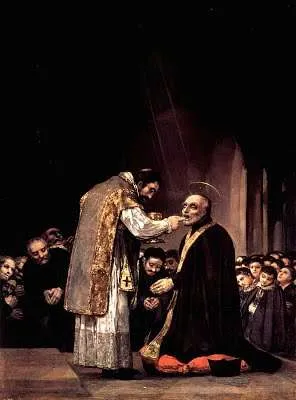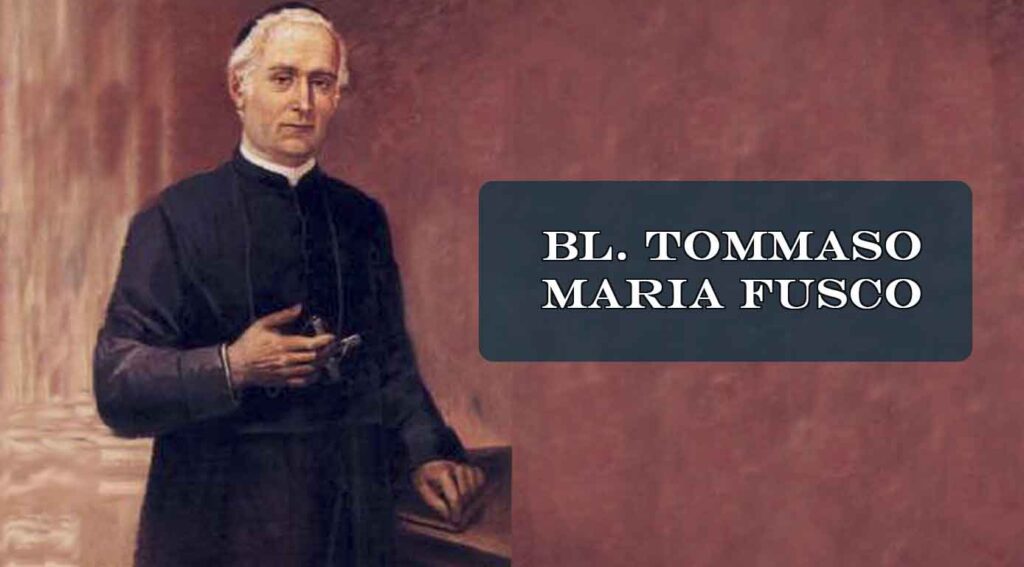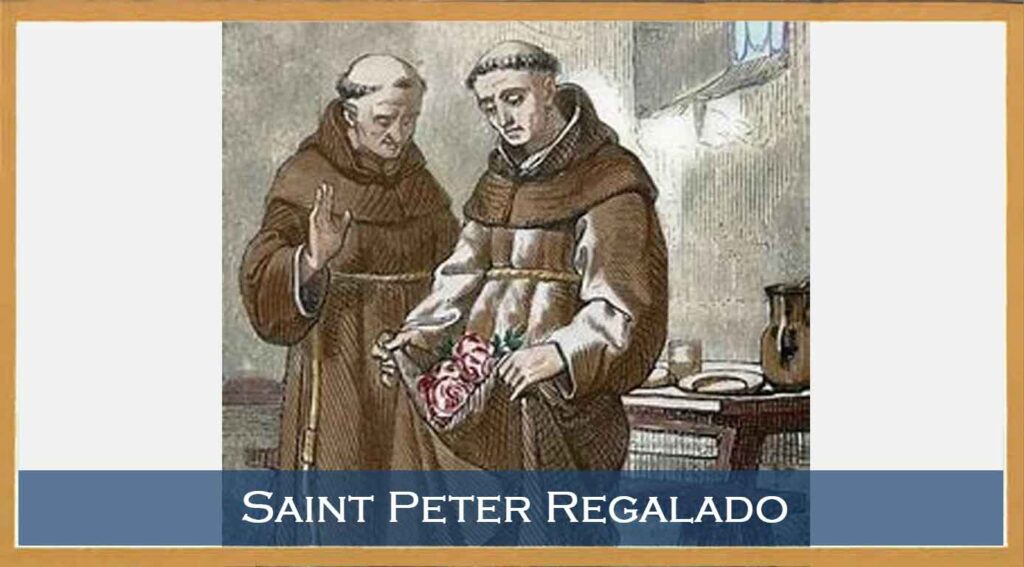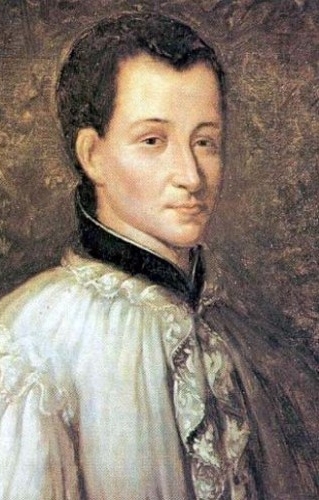1556–1648; Patron Saint of Catholic schools (especially ones for the poor), colleges, and schoolchildren; Canonized by Pope Clement XIII on July 16, 1767
Joseph Calasanz was born near Peralta de la Sal, in the Kingdom of Aragon, modern-day Spain. While farming was the primary means of livelihood for most people in his hometown, Joseph’s parents were members of the nobility and devout Catholics who ensured that he was well educated and learned his catechism from a young age. One story relates that, as a boy, Joseph used to gather the other children and teach them about God. One day, after learning about the devil, he gathered some youth for an important mission: he wanted to kill the devil because the devil was God’s enemy.
Around the time Joseph turned fourteen, he was sent to a school about ten miles from his home, where he learned from the friars of the Trinitarian Order. It was then that he first sensed God calling him to become a priest. He was next sent to the University of Lleida, where he studied philosophy, earning a Doctorate in Laws with honors. Then he made the long journey south to study theology in Valencia before heading west to Madrid, where he completed his education.
Around that time, when Joseph was about twenty-six years old, his mother died. Though grief-stricken, he decided to fulfill the desire in his heart, informing his father that he wanted to become a priest. His father, however, wanted him to marry, since Joseph was the only surviving son to carry on the family name. Before the issue could be resolved, Joseph became ill and almost died. This so affected Joseph’s father that he changed his mind and permitted Joseph to be ordained. His ordination took place one year later on December 17, 1583.
For the next nine years, as a newly ordained priest with a sound education, Father Calasanz served in various capacities under two different bishops. He first served as theologian and confessor to Bishop della Figuera, as well as in important administrative positions. In 1587, Father Calasanz was summoned home to attend to his sick father who died shortly after his arrival. Bishop della Figuera also died around that time, so Father Calasanz began working as the Vicar General for the Bishop of Urgell, where he was ordained.
Less than five years later, in 1592, Father Calasanz heard God calling him to something new. Administrative work was not what God was calling him to for the rest of his life. This desire grew when he experienced a vision of himself teaching large numbers of children with the help of angels in the city of Rome. This vision impressed upon his heart so much that, at the age of thirty-five, he promptly responded to the call.
In Rome, Father Calasanz met Cardinal Marcantonio Colonna, who appointed him as his personal theologian and also had him tutor his nephew. He also joined the recently formed Confraternity of Christian Doctrine, which was established in Rome with the purpose of educating children in the faith. The problem Father Calasanz encountered was that there were many poor and orphaned children in Rome who were homeless and needed assistance. Seeing this broke his heart. Among their needs was catechesis, but they needed education and formation in every area of life. In response to these needs, Father Calasanz attempted to admit these children to a local school for free, but he met with roadblocks. The teachers, who already worked for low wages, were often unwilling to accept more children without pay. A local pastor, however, offered to help by allowing Father Calasanz to use some rooms at his church for classes. Soon, some other priests offered to help with the catechesis and in 1597, five years after arriving in Rome, Father Calasanz opened a school, the first free school for children in all of Europe.
Though the work began small, with only one school, the Holy Spirit soon flooded this good priest with an abundance of children and support. While the novelty of his approach resulted in resistance from some, others were impressed. From the pope and bishops, down to local priests and laity, many began to offer their support for his good work. In 1600, Father Calasanz opened his first “Pious School” in Rome and continued to expand. Two years later, he had around 1,000 children in his schools.
Around that time, Father Calasanz rented a house in Rome for himself and the priests who were assisting him so that they could form a community life together as they engaged in their work. Over the next fifteen years, Father Calasanz’s priestly companions grew to more than a dozen. These good priests sensed God calling them to form a religious order, so Father Calasanz formed a rule and presented it to the Holy Father. In 1617, Pope Paul V approved the rule submitted by Father Calasanz, and the “Pauline Congregation of the Poor of the Mother of God of the Pious Schools” (Piarist for short) was established as a congregation with simple vows. In addition to the normal vows of poverty, chastity, and obedience, these fathers took a fourth vow of dedicating themselves to the free education of children, especially the poor. In 1621, the congregation was elevated to the status of a religious order by Pope Gregory XV, who gave them the name “Order of Poor Clerics Regular of the Mother of God of the Pious Schools.”
By the time of Father Calasanz’s death in 1648, the Piarist Fathers ran dozens of free schools throughout Europe. Father Calasanz created his own teaching methods and curriculum, which he instilled in his brother priests. They welcomed all students, including Jews and Protestants. In addition to catechism, they taught science, math, literature, and Latin. They focused on character formation, hygiene, and basic skills to promote healthy living. Though they disciplined the children, they sought to do so with mildness, preferring to anticipate problems and prevent them, rather than being harsh after the children went astray.
Saint Joseph Calasanz’ vision of educating poor children while surrounded by angels came true. He sensed God calling him to a particular mission and did not hesitate to fulfill that duty. God used him to care for the poorest and most vulnerable in society by raising those children up into well-formed adults through compassion, formation, and systematic education. His approach to free education flowed from Christian charity, and that charity grew and blossomed throughout the entire world. Today, the 1,400 Piarist Fathers extend from Europe to Asia, Africa, and North and South America.
As we honor this great saint who was both a founder and educator, ponder the important responsibility of forming children in the faith. As you do, reflect upon your role in this. If God is calling you in some way to engage in the apostolate of the education and formation of youth, do not hesitate to respond. If not, add this important mission to your daily prayers so that the laborers who are needed will fill this most important role in the lives of those who need it the most.
Source: https://mycatholic.life/saints/saints-of-the-liturgical-year/st-joseph-calasanctius—august-25/








